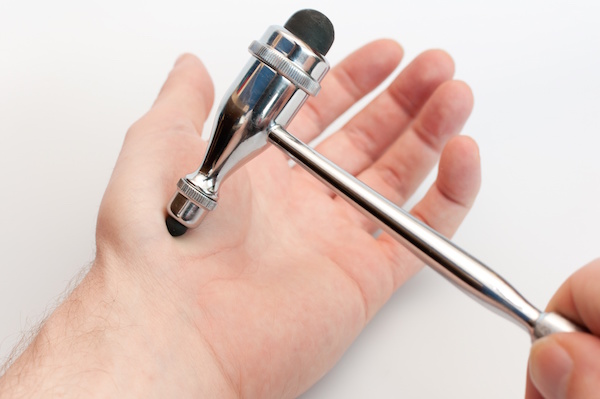
WEDNESDAY, Feb. 16 (HealthDay News) — Everyone’s heard of the placebo effect: when you take a sugar pill but believe it is medicine, it tends to work. Now a new study suggests that the opposite may also be true.
In the study, people’s pain levels fluctuated greatly with their belief that they either were or were not receiving a powerful painkiller, remifentanil — even though the dose of the drug did not change throughout the experiment.
Pain levels shot up, in fact, soon after participants were told that the drug had been discontinued, something experts call the “nocebo” effect.
The findings suggest that doctors may need to deal with their patients’ beliefs about a treatment, whether positive or negative, experts say.
“Our study provides evidence that the expectation of a drug’s effect critically influences its therapeutic efficacy,” said lead researcher Dr. Ulrike Bingel, from the department of neurology at the University of Hamburg Medical Center in Germany.
“We found that positive treatment expectancy substantially enhanced — doubled — the analgesic benefit of remifentanil. In contrast, negative treatment expectancy completely abolished remifentanil’s painkilling effect,” she said.
“Intriguingly, this very same pattern was found in the activation of those brain areas that are well known to be involved in the intensity of pain,” Bingel added.
The study, which also involved researchers from Oxford University in the U.K., is published in the Feb. 16 issue of Science Translational Medicine.
For the study, Bingel’s team gave 22 healthy volunteers the opioid painkiller remifentanil and then tested its effect by changing the patient’s expectations of the treatment.
The participants were first placed inside an MRI brain scanner, and an intravenous line used to administer the drug was attached. The researchers then applied heat to each volunteer’s leg to the point of causing pain, and set the heat at such a level that each participant initially rated their pain at 70 out of 100. At the same time, they gave the volunteers remifentanil but did not tell them they were doing so.
As would be expected with the powerful drug taking effect, the average level of self-reported pain participants felt declined a bit, falling from 66 points down to 55 on a 100-point scale.
The researchers then told the volunteers that the remifentanil was starting (even though they had already been getting the drug). The result: participants’ average pain levels fell dramatically, to 39 points.
To test the “nocebo” effect, Bingel’s team then told the volunteers they were stopping the drug and they might start to feel more pain again — a lie, since they continued to administer the same level of the painkiller.
At this point, the volunteers’ self-reported pain levels shot back up to an average of 64 points — that is, the pain was as great as if they had received no pain relief at all.
In each stage of the experiment, MRI scans showed different brain activity in responses to the volunteer’s varied expectations of pain or pain relief, the researchers said. Specifically, in people who were primed to think they were getting the painkiller, areas of the brain were engaged that made it more difficult for pain signals to reach the brain or spinal cord, the researchers said.
Bingel believes that the data “opens a new avenue of research,” linking up drugs with patients’ personalities and expectations in the context of specific medical conditions.
The findings also have implications for clinical practice, she said. “We believe that the beliefs, expectations and previous experiences with drug treatments should be more systematically assessed and integrated [by doctors] to optimize the overall treatment outcome.”
One expert agreed.
Dr. Fatta B. Nahab, an assistant professor of neurology at the University of Miami’s Miller School of Medicine, said the study shows that patient expectation can have an impact on outcomes.
“What this teaches doctors is that you have to do a great job of educating patients about their treatments, and also limit false or negative expectations,” he said. “If we do that our outcomes would be much better and, I think, patients would be more satisfied with the treatments they are getting.”
The findings may also point to ways of harnessing the brain to improve treatments.
“People have talked about bottling the placebo response,” Nahab said. “This is our first indication of how we might bottle that placebo response. If we could go into some of these regions and figure out if we could change them, we might be able to enhance the efficacy of any medication or any treatment, and that’s really the huge part of this work.”
More information
For more information on pain management, visit the U.S. National Library of Medicine.

